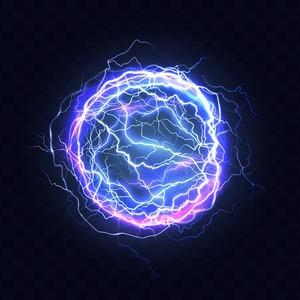
Have you ever seen a lightning bolt? What about the northern lights or a neon sign? These things are made of plasma, the fourth state of matter that makes up nearly 99.9% of the universe. In the past few decades, its power has been harnessed to create the integrated chip, fueling the modern electronics industry. An article by Keren Kanarik, senior technical director, in the Journal of Vacuum Science & Technology discusses the mysterious and spectacular world of plasma through the lens of a process engineer.
ABSTRACT
Plasma is found almost everywhere in the universe. Yet most people are not conscious of its presence, nor the role it plays in creating the electronic devices in our everyday lives. Virtually every semiconductor chip has been touched by plasma, which is used in nearly half of all semiconductor manufacturing steps today. These chips power our mobile phones, computers, automobiles, and are vital for making artificial intelligence a reality. With a reputation of mystery, the world of plasma processing has largely remained hidden from the consumer’s view. What does plasma do in chipmaking? Why is it so critical? What does a process engineer do? To give the reader a sense of the importance that plasma plays in the electronics industry and how its energy has been harnessed into producing chips, this perspective aims to make this technology more relatable as it continues to change our everyday lives.
1. INTRODUCTION
In 1989, The New York Times characterized plasma processes as “little-known but crucial” and deemed them “arcane” as if this mysterious world could only be known by those with secret knowledge.1 Those statements were made back when plasma was used in only a handful of processes. Plasma is now used in nearly half of the hundreds of steps needed to manufacture a semiconductor chip. Without it, we might still be living in a world without our advanced mobile phones, computers, and the Internet. I had not given much thought to plasma before joining the semiconductor industry nearly two decades ago—as a new graduate with a Ph.D. in Physical Chemistry. I was invited to participate in the “Celebrating the Women of the AVS” issue to provide a perspective for this special topic collection. I am using this opportunity to highlight the importance of plasma processing for newcomers and to share my excitement for its future.
2. PLASMA IS ALL AROUND US
Even those working with plasma every day may like to step back to think about its origins. The story of plasma begins 13.8 billion years ago with the Big Bang. The universe was so hot that most visible matter was plasma—ions, electrons, radicals, and photons. It was only hundreds of thousands of years later that matter cooled enough to form neutral atomic gases. The visible universe is still predominantly made of plasma in stars and interstellar space. While plasma is today referred to as the fourth state of matter, the universe made it before the other states—solids, liquids, and gases.
Remarkably, although it is the most common and fundamental state of matter, plasma was only given a name less than a century ago. It was coined by Nobel laureate Irving Langmuir in 1928 when he called the emissions of a fluorescent lamp by the Greek word for “formation” or “mold.”2 His reasoning is unknown, and the term had already been used in biology (e.g., blood plasma). His choice is part of the mystery—the word “plasma” may be a misnomer given that, unlike an actual shapeable mold, it does not tend to conform to any external influence and seemingly has a mind of its own.3 Up close, plasma behaves as a complex, nonlinear system in which gases have been broken down into their constituent parts such as ions, radicals, photons, and electrons. However, from far away, plasma looks more like a gentle glow of light. Nature produces these beautiful radiances in forms such as lightning bolts, the aurora borealis, and solar flares.
Although the universe created plasma, humans have found inventive ways to use it. Students had plasma lamps in the 1980s, families watched plasma TVs in the 1990s, and tiny plasmas are used by dentists today. Plasma can even be made in a common kitchen. If you dare, cut a grape almost in half and place it into the microwave oven. The microwaves break down the air between the grape halves to form a plasma.4 A typical commercial plasma reactor is not much larger than a microwave oven and works similarly, except using radio waves and specialized gases under vacuum. It is the ability to control the plasma and its interactions with the surface of the wafer that makes it so valuable for advancing technology.
To continue reading, log in or create an account with the Journal of Vacuum Science & Technology.
References
- A. Pollack, “Pillar of chip industry eroding,” The New York Times, 1989.
- L. Tonks, Am. J. Phys. 35, 85 (1967).
- F. Chen, Introduction to Plasma Physics and Controlled Fusion (Springer, New York, 1984).
- See: https://www.youtube.com/watch?v=wCrtk-pyP0I